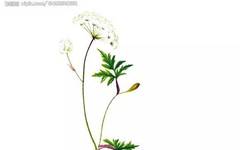Herb Name: Chuanxiong (Ligusticum chuanxiong)
Alias: Chuanqiong
Harvesting and Processing: The roots are harvested from late May to early June of the second year after planting. The roots are dug up, the soil is shaken off, and the stems and leaves are removed before being dried. Plains cultivators prefer to harvest 4-5 days after the “Xiaoman” solar term, while mountain cultivators often harvest in August or September. The roots are dug out, cleaned of stems, leaves, and soil, washed, sun-dried or oven-dried, and then the fibrous roots are removed using a pounding basket. Medicinal Part: Roots and rhizomes. Origin: Sichuan, Yunnan, Guizhou, Guangxi. Family: Apiaceae. Plant Description: Perennial herb. Height 40-70 cm. The whole plant has a strong aroma. The roots and rhizomes are irregularly nodular and bulbous, with numerous fibrous roots at the lower end. The stem is erect, cylindrical, hollow, with longitudinal grooves on the surface. The lower nodes of the stem are swollen into a disc shape (commonly known as “Lingzi”), while the nodes above the middle are not swollen.
Height 40-70 cm. The whole plant has a strong aroma. The roots and rhizomes are irregularly nodular and bulbous, with numerous fibrous roots at the lower end. The stem is erect, cylindrical, hollow, with longitudinal grooves on the surface. The lower nodes of the stem are swollen into a disc shape (commonly known as “Lingzi”), while the nodes above the middle are not swollen.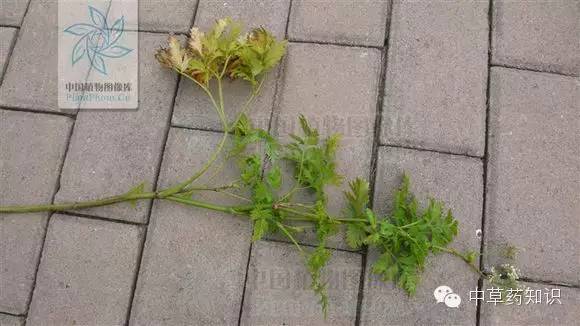 The lower leaves of the stem have petioles that are 3-10 cm long, widening at the base into a sheath; the leaf blades are ovate-triangular, 12-15 cm long and 10-15 cm wide, with three to four times pinnate lobes, 4-5 pairs of leaflets, ovate-lanceolate, 6-7 cm long and 5-6 cm wide, with the terminal lobes linear-lanceolate to oblong, 2-5 mm long and 1-2 mm wide, with a small pointed tip, and sparse short soft hairs only on the veins; the upper leaves of the stem gradually simplify.
The lower leaves of the stem have petioles that are 3-10 cm long, widening at the base into a sheath; the leaf blades are ovate-triangular, 12-15 cm long and 10-15 cm wide, with three to four times pinnate lobes, 4-5 pairs of leaflets, ovate-lanceolate, 6-7 cm long and 5-6 cm wide, with the terminal lobes linear-lanceolate to oblong, 2-5 mm long and 1-2 mm wide, with a small pointed tip, and sparse short soft hairs only on the veins; the upper leaves of the stem gradually simplify.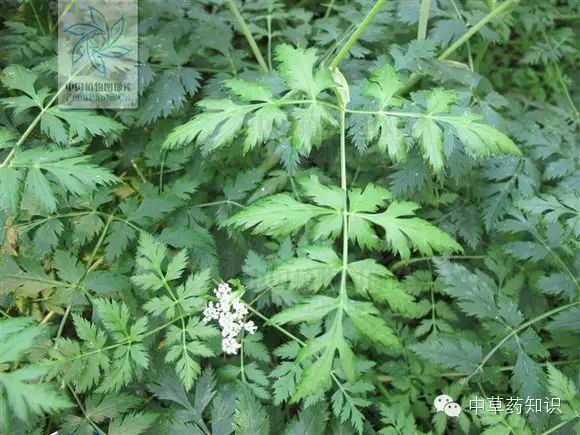
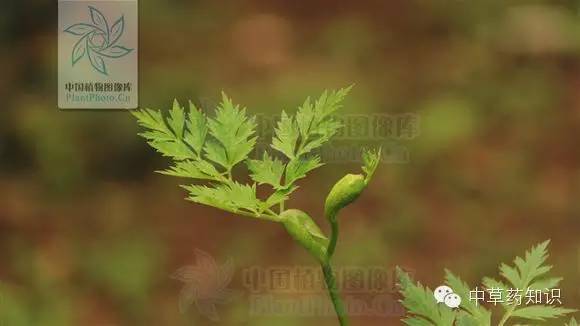 The compound umbel is terminal or lateral, with 3-6 involucral bracts that are linear, 0.5-2.5 cm long; the umbel rays are 7-20, unequal in length, 2-4 cm long; the small umbel has 10-24 flowers; the small involucral bracts are 2-7, linear, slightly purplish, covered with soft hairs, 3-5 mm long; the calyx teeth are undeveloped; the petals are white, obovate to elliptical, with a short pointed protrusion at the tip, curved inward; there are 5 stamens, with pale green anthers; the style is 2, 2-3 mm long, curved downward.
The compound umbel is terminal or lateral, with 3-6 involucral bracts that are linear, 0.5-2.5 cm long; the umbel rays are 7-20, unequal in length, 2-4 cm long; the small umbel has 10-24 flowers; the small involucral bracts are 2-7, linear, slightly purplish, covered with soft hairs, 3-5 mm long; the calyx teeth are undeveloped; the petals are white, obovate to elliptical, with a short pointed protrusion at the tip, curved inward; there are 5 stamens, with pale green anthers; the style is 2, 2-3 mm long, curved downward.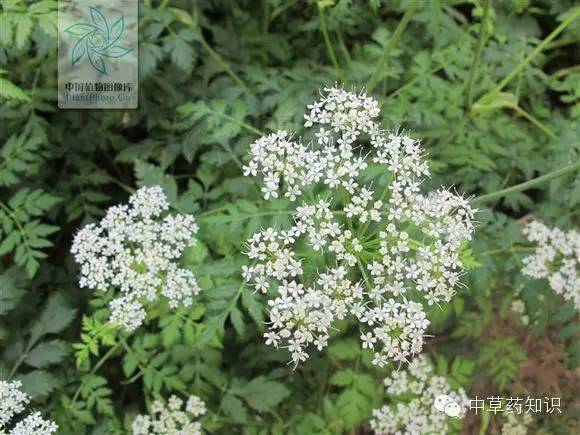 The immature fruit is flattened on both sides, 2-3 mm long and about 1 mm wide; there are 1-5 oil ducts in the dorsal grooves, 2-3 oil ducts in the lateral grooves, and 6-8 oil ducts on the fused surface. Flowering period: July-August; immature fruit period: September-October.Chuanxiong slices characteristics: The roots and rhizomes are irregularly nodular and bulbous, with a diameter of 1.5-7 cm. The surface is yellow-brown to yellow-brown, rough and wrinkled, with numerous parallel raised nodes; the top has a round depression resembling a stem scar, and the underside and nodes have numerous small tuberous root scars. The texture is firm, not easily broken, with a cross-section that is yellow-white or gray-yellow, with wavy ring patterns, and scattered yellow-brown oil spots. The aroma is strong and distinctive, with a bitter, spicy taste, slightly sweet aftertaste, and a tingling sensation on the tongue.
The immature fruit is flattened on both sides, 2-3 mm long and about 1 mm wide; there are 1-5 oil ducts in the dorsal grooves, 2-3 oil ducts in the lateral grooves, and 6-8 oil ducts on the fused surface. Flowering period: July-August; immature fruit period: September-October.Chuanxiong slices characteristics: The roots and rhizomes are irregularly nodular and bulbous, with a diameter of 1.5-7 cm. The surface is yellow-brown to yellow-brown, rough and wrinkled, with numerous parallel raised nodes; the top has a round depression resembling a stem scar, and the underside and nodes have numerous small tuberous root scars. The texture is firm, not easily broken, with a cross-section that is yellow-white or gray-yellow, with wavy ring patterns, and scattered yellow-brown oil spots. The aroma is strong and distinctive, with a bitter, spicy taste, slightly sweet aftertaste, and a tingling sensation on the tongue.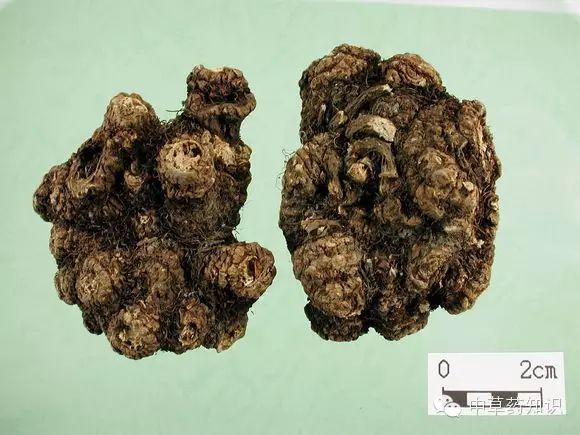
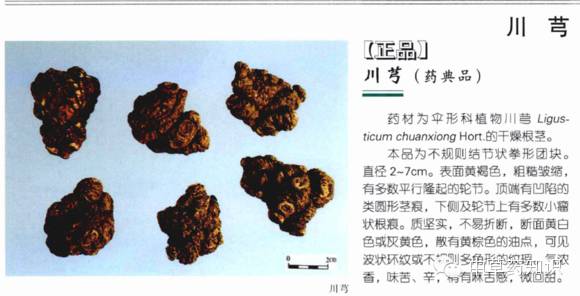
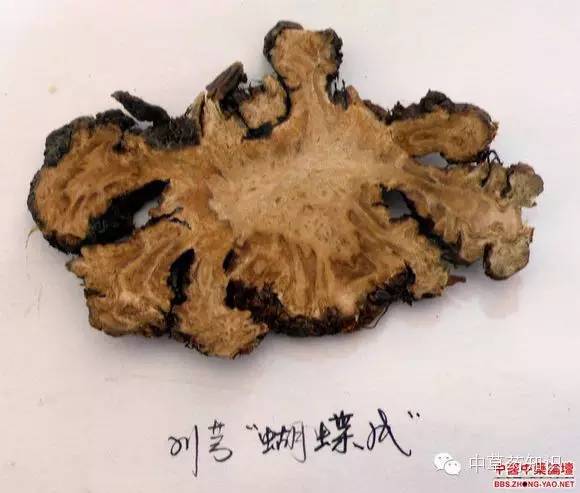 Those with large, plump, firm texture, yellow-white cross-section, high oil content, and strong aroma are preferred.
Those with large, plump, firm texture, yellow-white cross-section, high oil content, and strong aroma are preferred.
Chuanxiong Properties: Taste is spicy, slightly warm, enters the Liver meridian (Gan jing) of the Foot Jueyin. It promotes the flow of Qi and blood, alleviates stagnation, stops pain, and breaks up blood stasis. Its spicy nature ascends and disperses, effectively addressing liver Qi stagnation, alleviating pain, and regulating the flow of Qi and blood. It is suitable for those with liver Qi stagnation. Its main indications include: carbuncles, furuncles, scrofula, hemorrhoids, and various sores, as well as stopping bleeding from the mouth, nose, teeth, and during urination.
【Properties】 Taste is spicy, warm, and non-toxic.【Additional Notes】 It is effective for cold pain in the brain, facial wind, excessive tears and saliva, sudden swelling and pain in the abdomen, and pain in the sides.【Daming】 It addresses all types of wind, Qi, fatigue, and blood issues, tonifies the five fatigues, strengthens muscles and bones, regulates various meridians, breaks up blood stasis, nourishes new blood, and treats coughing blood, nosebleeds, and blood in urine, as well as conditions like cerebral palsy, furuncles, scrofula, and hemorrhoids.【Haogu】 It searches for liver wind, nourishes liver blood, moistens dryness in the liver, and benefits liver deficiency.【Rongchuan】 Chuanxiong is spicier and more bitter than Angelica sinensis, with a strong wood-fire nature, bitter and spicy, has the function of generating blood, is not soft and moist, and is specialized in moving the blood of the heart and liver. The bitterness represents the flavor of fire, and the combination of bitterness and spiciness indicates a warm nature with blood-generating properties. Bitter without spiciness indicates a cooling nature that primarily promotes blood flow, while warmth represents the Yang within Yin, thus entering the liver meridian. The roots also promote upward movement, dispersing wind-cold, Qi stagnation, and blood stasis, alleviating cold and heat-related body pain, and addressing menstrual issues in women.【Dosage】 Generally, 9-15 grams.【Contraindications】 Its dispersing nature is not suitable for long-term use, as it can harm the liver; avoid with Huanglian (Coptis chinensis) and Fuzhu (realgar).【Preparation】 Chuanxiong: Remove impurities, separate large and small pieces, soak in water, dry, and slice. Wine Chuanxiong: Take Chuanxiong slices and spray with yellow wine evenly, slightly dampen, and stir-fry until slightly charred, then cool (for every 100 jin of Chuanxiong slices, use 12 jin 8 liang of yellow wine). 【Properties】 Taste is spicy; nature is warm.
【Meridian Entry】 Enters the Liver, Gallbladder, and Pericardium meridians.
【Functions and Indications】 Chuanxiong is a key herb for promoting Qi and blood circulation, functions to regulate Qi and relieve stagnation, enters the liver to regulate blood, ascends to the head, descends to the blood sea, and is indicated for headaches and all conditions of Qi and blood stagnation in women, abdominal pain, weakness in the waist and legs, breaking up blood stasis, nourishing new blood, and dispelling wind. It invigorates blood and dispels stasis; regulates Qi and relieves stagnation; dispels wind and alleviates pain. It is indicated for menstrual irregularities; dysmenorrhea; postpartum stasis and pain; masses and lumps; chest and flank pain; headaches and dizziness; wind-cold-damp bi syndrome; trauma; and carbuncles and sores.
【Dosage and Administration】 Internal use: decoction, 3-10 g; powdered, 1-1.5 g per dose; or in pills or powders. External use: appropriate amount, powdered for sprinkling; or decoction for gargling.
【Cautions】 Avoid use in individuals with Yin deficiency and excess heat, as well as those with upper excess and lower deficiency and weak Qi.1. “Bencao Jing Jizhu”: Bai Zhi (Angelica dahurica) is a guiding herb. Avoid Huanglian (Coptis chinensis).2. “Pinhui Jingyao”: Long-term use can disperse true Qi.3. “Bencao Mengquan”: Avoid Huangqi (Astragalus membranaceus), Shanzhuyu (Cornus officinalis), and Wolfberry (Lycium barbarum). Avoid Nitrate and Talc, and counteract with Li Lu (Veratrum). 4. “Bencao Jing Shu”: For patients with upper excess and lower deficiency, excess heat rising, vomiting, coughing, spontaneous sweating, night sweats, dry throat, fever, thirst, and irritability, it should be avoided.5. “Bencao Congxin”: Not suitable for those with Qi rising phlegm and asthma.6. “Depei Bencao”: Avoid in cases of severe internal heat, spleen deficiency, and low appetite, as well as in cases of heat-induced headaches.

